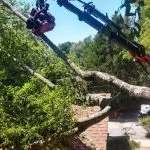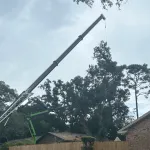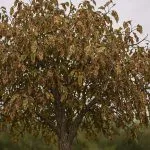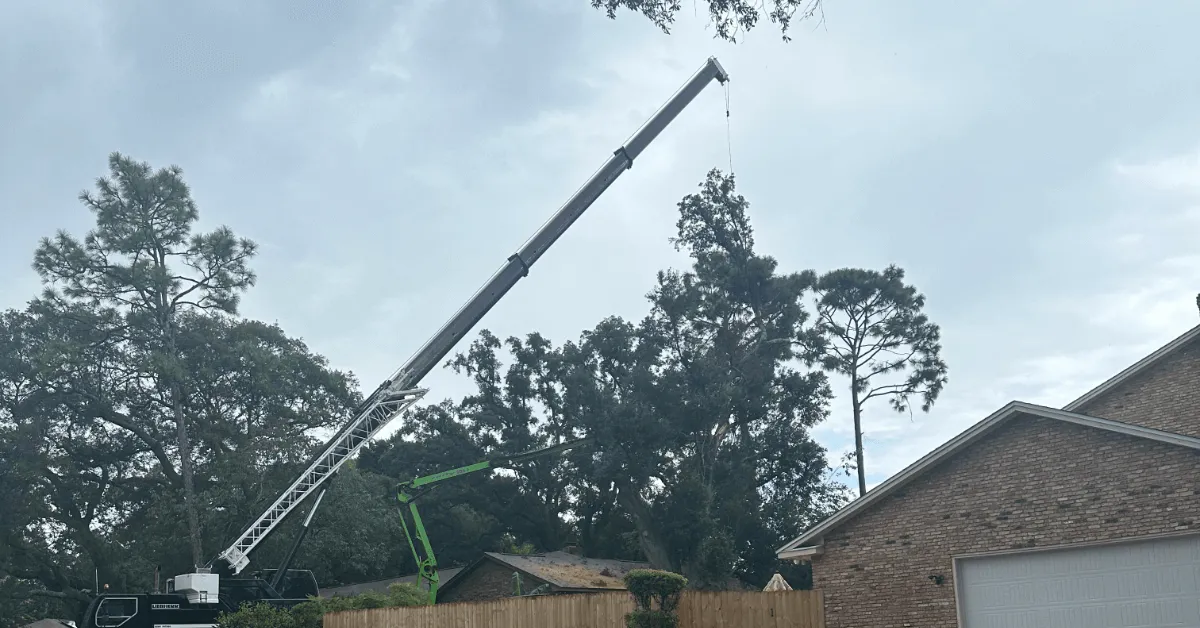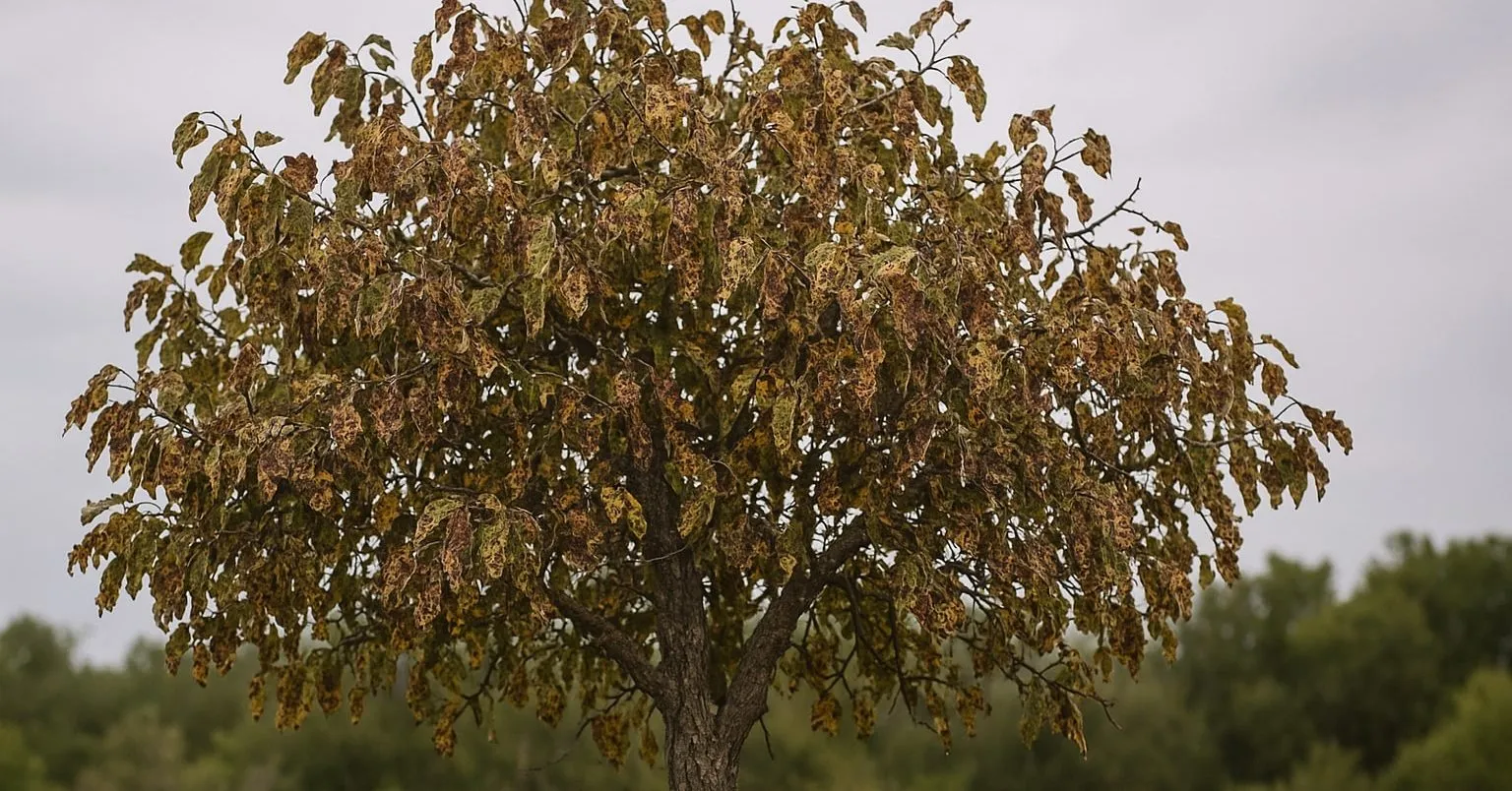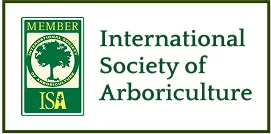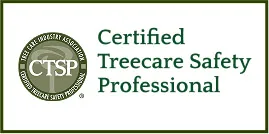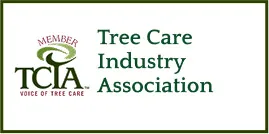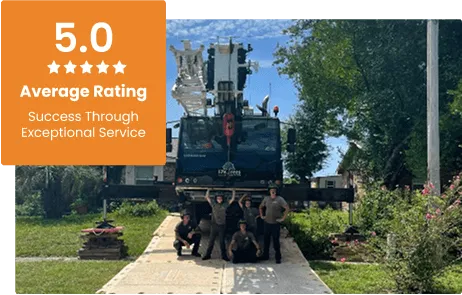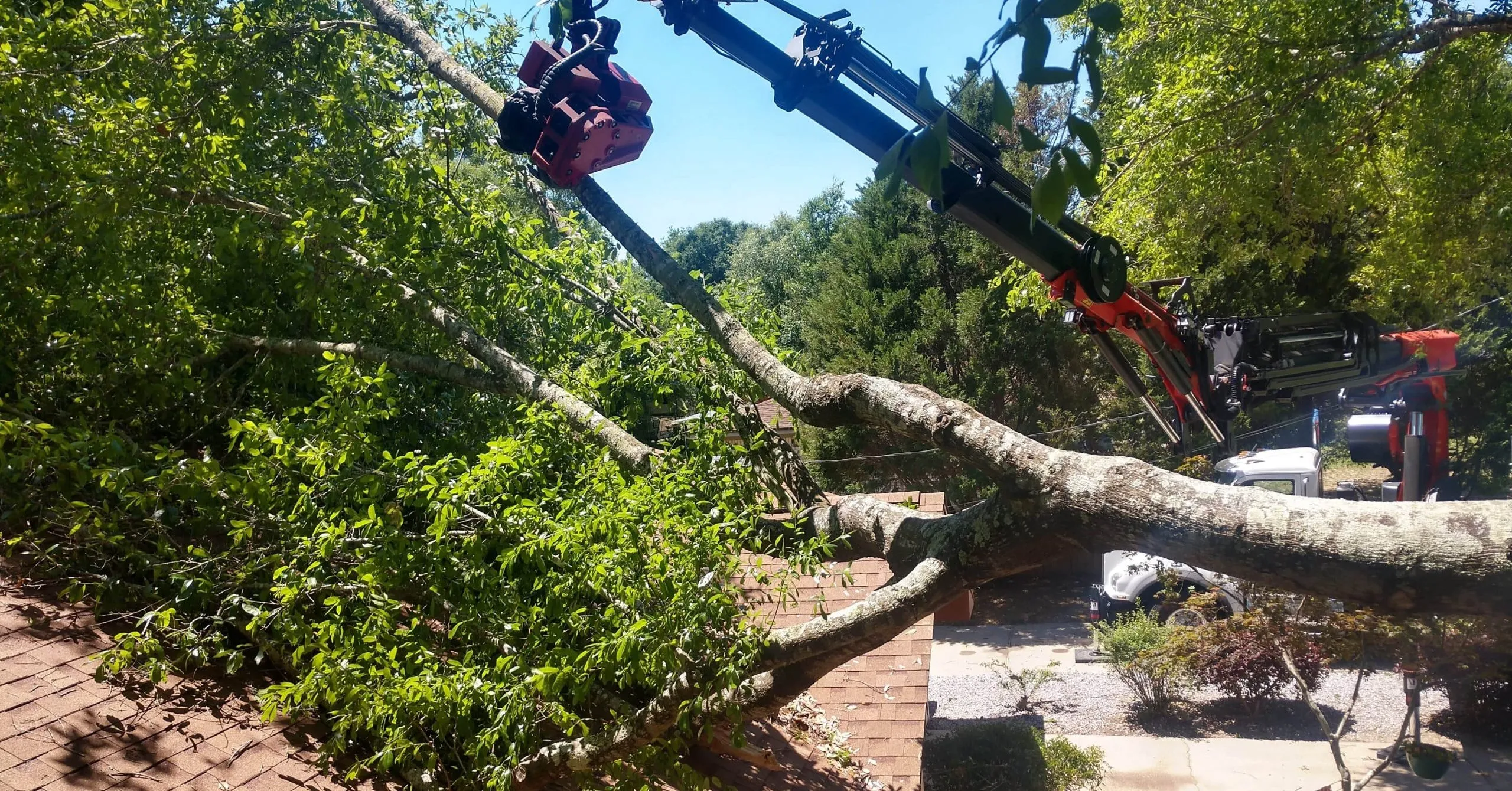
October 28, 2025
A leaning tree is often more than just a visual concern: it can be a serious safety risk. If the tilt appears suddenly or worsens over time, take it as a warning sign. The pressure on roots and trunk fibers can reach a breaking point during storms, strong winds, or heavy rain.
Before doing anything else, stay away from the lean direction and prevent anyone from walking or parking near it. Document the lean with photos of the entire tree, the soil at its base, and any visible cracks or mushrooms. These details can help an arborist quickly determine whether the tree is safe or needs immediate action.
Homeowners in Pace, FL often wonder whether a leaning tree can be saved or if removal is the only solution. The answer depends on several factors, including the angle, root stability, and nearby targets. The following sections explain what to look for and when to call for help.
Immediate Safety Measures
If you spot a leaning tree after a storm or during periods of heavy soil saturation, act immediately to reduce risk:
- Keep the area clear. Make sure family members, pets, and vehicles are not under or near the lean. The fall zone can extend much farther than expected.
- Document everything. Take several photos from different angles, including the base of the tree, soil condition, and surrounding structures. This can support insurance claims if damage occurs.
- Avoid physical intervention. Do not attempt to straighten or cut the tree yourself. A weakened or uprooted tree can collapse without warning.
- Monitor changes. If the angle increases or the soil begins to lift, call an arborist immediately. A sudden lean is a clear sign of root failure.
Why Trees Lean
Trees can lean for natural or structural reasons, but not all leans carry the same risk. Understanding what causes it helps you identify when it’s dangerous:
- Light-seeking growth (phototropism): Trees often grow toward sunlight, especially when shaded on one side. This lean develops gradually and is usually stable if the roots remain firm.
- Wind and weather: Constant directional winds, storms, or saturated soils can shift a tree’s balance, particularly in open areas or on slopes. In regions like Pace, Florida, heavy rain, high humidity, and hurricane-season winds can quickly loosen soil and weaken root systems.
- Root and trunk damage: Construction near the base, root rot, or trunk cracks disrupt anchorage and increase the likelihood of failure. These are the most dangerous types of leans.
How to Tell if a Leaning Tree Is Dangerous
A lean alone doesn’t always mean the tree must be removed. However, certain signs signal urgent risk.
| Indicator Type | What to Look For | What It Means |
|---|---|---|
| Stable Lean | The lean has been present for years, with no soil movement, cracks, or decay. | Usually safe but should still be monitored annually. |
| New or Worsening Lean | Tilt increased suddenly after rain or storms. | High risk of root failure or soil instability. |
| Soil Heaving or Cracking | Uplifted soil or exposed roots on one side of the base. | Indicates root plate movement and potential collapse. |
| Trunk Cracks or Decay | Vertical splits, cavities, or mushrooms at the base. | Structural failure likely in strong winds. |
| Lean Over a Target | Tree positioned toward a house, driveway, or walkway. | Requires professional risk assessment. |
A practical rule: once the lean reaches around 15 degrees or continues to increase, the tree should be evaluated and possibly removed.
When to Call an Arborist
You should contact an ISA-certified arborist immediately if you notice:
- A new or noticeably worsening lean
- Soil cracks, mounding, or visible root exposure
- Mushrooms or conks growing at the base
- The tree leaning over a structure, play area, or power line
Arborists perform detailed risk assessments to determine both the likelihood of failure and the consequences if it does fall. They’ll recommend corrective pruning, cabling and bracing, or complete removal depending on the severity.
Can a Leaning Tree Be Saved?
Whether a leaning tree can be saved depends on its age, the cause of the lean, and the condition of its roots and trunk. Some trees can recover with professional support and soil correction, while others are simply too unstable to keep safely.
Young Trees
Leaning is common in young or newly planted trees, especially after windstorms or improper planting. In many cases, these can be corrected through proper staking, flexible ties, and soil improvement.
- Staking and support: Use two or three stakes with soft, flexible ties that allow slight movement. This gentle sway encourages the roots to strengthen and anchor naturally.
- Soil correction: Loosen compacted soil around the base and ensure even watering to help roots spread evenly in all directions.
- Regular adjustment: Check the ties every few weeks and remove them after one growing season to prevent girdling or trunk damage.
When addressed early, young trees often regain upright growth within a year, provided the roots were not severely damaged.
Mature Trees
Older trees with an established lean require a more cautious approach. Their size and weight make self-correction unlikely, but stability can sometimes be improved with targeted professional work.
- Corrective pruning: Strategic pruning reduces the weight on the leaning side and balances the crown, which helps reduce wind resistance.
- Cabling and bracing: Arborists may install internal rods or overhead cables to support heavy branches or multi-stem junctions, especially when the trunk or unions are still structurally sound.
- Soil stabilization: Improving drainage or adding aeration in waterlogged areas can strengthen root zones and reduce further movement.
However, if decay, root damage, or cracks are present, these interventions may only delay inevitable failure. In such cases, professional removal is the safest long-term decision.
Decision Tip
If you notice that the lean is increasing or the soil at the base is shifting, especially near a structure, driveway, or power line, removal is typically the most responsible choice. A single storm can turn a manageable tilt into a major property or safety hazard. Consulting an ISA-certified arborist ensures that you get an unbiased evaluation based on the tree’s condition, surroundings, and long-term safety.
Corrective and Preventive Options
1. Corrective Pruning
Removes heavy limbs or uneven weight from the leaning side to balance the crown and reduce wind resistance.
2. Cabling and Bracing
Steel or synthetic supports help stabilize major branches or split trunks. These systems must be installed and inspected by professionals.
3. Staking and Guying (for Young Trees)
Flexible tie systems can gradually reorient young trees without restricting growth.
4. Tree Removal
When decay, root damage, or soil instability is advanced, professional removal eliminates risk to people and property.
Monitoring a Minor Lean
Not every leaning tree is an emergency. Some develop a natural lean early in life or adapt to surrounding light conditions. However, even a mild tilt can worsen over time, especially after storms, soil saturation, or pruning that shifts weight distribution. Regular monitoring helps you catch early warning signs before they turn into a safety hazard.
How to Track Subtle Changes
- Measure the lean accurately.
Hang a plumb line or use a level app to measure the angle between the trunk and a true vertical line. Record the measurement and recheck it after heavy winds or rain. A noticeable increase suggests the roots are moving and should be assessed promptly. - Inspect the soil around the base.
Look for new cracks, heaving soil, or exposed roots on the side opposite the lean. These are signs that the root plate may be lifting or detaching, even if the tree still appears stable. - Observe canopy balance.
Uneven foliage, dead branches, or thinning leaves on one side can indicate internal stress or partial root failure. If branches on the leaning side start dying back, the tree may be losing support underground. - Take photos over time.
Documenting the lean every few months helps detect subtle progression that might otherwise go unnoticed. This record also assists an arborist in evaluating long-term changes.
If you observe any increase in the lean, soil movement, or canopy stress, schedule an inspection before conditions worsen. Trees under mild tension can sometimes be stabilized, but once the lean accelerates, options become limited.
What to Avoid
- Do not top or heavily cut back the tree.
Topping causes rapid decay, weak regrowth, and structural imbalance, making the tree far more likely to fail in the future. - Avoid rigid or metal ties.
Using stiff supports restricts the trunk’s natural movement, leading to girdling, tissue damage, and weakened anchorage. Only flexible, professional-grade materials should be used when staking. - Never dig or trench near the base.
Severing even a few structural roots can destabilize the entire tree. Excavation, grading, or root cutting near a leaning tree often turns a low-risk situation into an imminent hazard.
FAQs
Is a leaning tree always dangerous?
No. Some trees develop stable leans over time. The danger lies in new or worsening leans or those over high-value targets.
Can I fix a leaning tree myself?
Avoid DIY correction on mature trees. Root systems and internal decay are unpredictable. Use professionals for pruning or bracing.
Can cabling or bracing save my tree?
It depends on structural soundness. These systems reduce movement but cannot restore decayed or severed roots.
When does a tree need to be removed?
If the lean worsens, soil lifts, or the tree threatens people or property, removal is the safest option.
Do soil conditions contribute to leaning?
Yes. Poor drainage, erosion, and compacted soils reduce root strength and stability. Proper maintenance helps prevent tipping.
Next Steps
- Clear the area around the tree and record photos.
- Contact an ISA-certified arborist for a full risk assessment.
- Follow through with professional recommendations, pruning, bracing, or removal.
- In Pace, Florida, schedule tree inspections at least twice a year—especially before hurricane season and after major storms.
How D’s Trees Can Help
D’s Trees offers complete hazard evaluations, corrective pruning, bracing systems, and crane-assisted removals. Our ISA-certified team is trained to assess structural stability and provide detailed documentation for insurance or property management. We also offer 24/7 emergency tree service across Pace and Pensacola for urgent leaning tree situations.
A leaning tree is not always an emergency, but a worsening one is never safe to ignore. Acting early protects your property, reduces costs, and ensures your trees remain a healthy, valuable part of your landscape.

